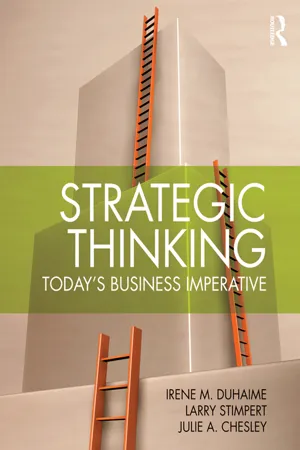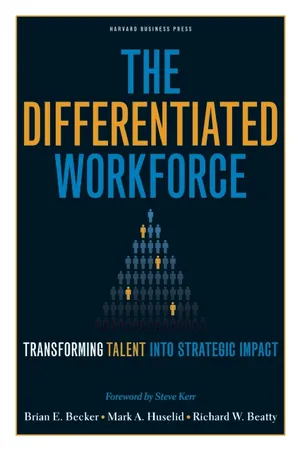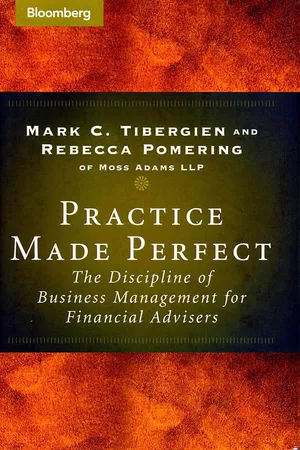Business
Strategic Positioning
Strategic positioning refers to the process of defining how a company's products or services differ from those of its competitors and how they fit into the market. It involves identifying and communicating the unique value that a business offers to its target customers. By establishing a distinct position in the market, companies can gain a competitive advantage and attract customers.
Written by Perlego with AI-assistance
Related key terms
Related key terms
1 of 4
Related key terms
1 of 3
6 Key excerpts on "Strategic Positioning"
- Celine Chew(Author)
- 2009(Publication Date)
- Routledge(Publisher)
Additionally, the distinctiveness of services provided by service organizations and non-profit organizations compared to physical goods suggests that organizational-level positioning is more important for services than product or brand positioning (Devlin, Ennew, and Mirza 1995). This is because creating differentiation advantage based on product features is limited, even impractical for service and mission-critical organizations (ibid.: 121). Chew (2005) distinguishes between Strategic Positioning at the organizational level and positioning at the operational level in charities. Strategic Positioning is defined as “a managerial decision-process to develop an organization level positioning strategy that aims to effectively differentiate the organization from other non-profits or service providers” (ibid.: 4). The aim is to identify the charity’s place (its strategic position) in its environment, which is shaped by its mission and distinctive or core competences (Chew 2006a, 2006b).Strategic PositionThe process of Strategic Positioning helps to create the strategic position of the organization and its offerings in the marketplace (Kotler 1994). Johnson, Scholes, and Whittington (2006) suggest that the strategic position of an organization is the outcome of decisions made at the corporate level, and is influenced by the external environment, availability of internal resources, and core competences, and the expectations of various internal and external stakeholders. The organization’s strategic position explicitly or implicitly identifies the key direction for its core positioning strategy and provides guidance in developing its positioning dimensions (its distinctiveness) based on key strengths and core competences in order to differentiate itself from other providers (Chew and Osborne 2008a). Chapter 1- eBook - ePub
- Irene M. Duhaime, Larry Stimpert, Julie Chesley(Authors)
- 2012(Publication Date)
- Routledge(Publisher)
Chapter 6 Business Definition and PositioningDOI: 10.4324/9780203807620-6This chapter focuses on managers’ decisions about business definition and positioning— decisions that are among the most important that they make. As illustrated in Exhibit 6.1 , this chapter describes how managers’ mental models about their firms’ industry environments influence their decisions about business definition and positioning.Exhibit 6.1 Managers' Beliefs, Strategic Decisions, and Their Influence on Performance and Competitive AdvantageChapter Objectives
The specific objectives of this chapter on business definition are to:- Emphasize the connection between managers’ understandings of their competitive environment and their decisions about business definition and positioning.
- Define the concepts of business definition and positioning, and emphasize the importance of these strategic activities.
- Describe the ways in which business definition can be a source of, or contribute to, the development of sustained competitive advantage.
- Illustrate some effective business definitions.
- Since firms and businesses operate in changing industry environments, the chapter will also emphasize the importance of redefinition, and illustrate the challenges associated with redefinition.
What Are Business Definition and Positioning?
The text has defined strategy as “a pattern in a stream of decisions,” and one of the most important sets of decisions managers make involves defining and positioning their firms and businesses. Definition is the way a firm or a business describes itself to employees, customers, and other constituencies while also distinguishing it from other business organizations that may or may not be competitors. Thus, definition conveys what is most important about that company while also distinguishing the company from its competitors. In short, definition provides an organization with an identity that describes what is “central, distinctive, and enduring” about it.1 - eBook - ePub
Strategic Consulting
Tools and methods for successful strategy missions
- Philippe Chereau, Pierre-Xavier Meschi(Authors)
- 2017(Publication Date)
- Palgrave Macmillan(Publisher)
© The Author(s) 2018Begin AbstractStrategic Consulting https://doi.org/10.1007/978-3-319-64422-6_3Philippe Chereau andPierre-Xavier Meschi3. Defining Strategic Positioning
End AbstractPhilippe Chereau1andPierre-Xavier Meschi 2(1) SKEMA Business School, Lille, France(2) IAE Aix-en-Provence, Aix-en-Provence, France3.1 The Mission
Defining a company’s Strategic Positioning as part of a consulting mission usually means establishing its positioning with regard to the competition. This means defining its strengths and weaknesses compared to competitors in the same strategic group , for each of its strategic segments in terms of their value (or attractiveness). This process should provide the company with factual information as to the intrinsic value of each of its strategic business units (SBUs)—sometimes called product/market domains—and suggest development choices relative to this value.Understanding the company’s environment and thereby assessing its value is key for building a company strategy. This external/internal approach to competitive advantage , embodied by Michael E. Porter , was long-favoured by strategy researchers and consultants; however, its limitations are evident in highly competitive contexts where numerous external influences are likely to weigh heavily on the company’s adaptive capabilities. According to Rita Gunther McGrath1 this hypercompetitive situation renders competitive advantage “transient ” so the company needs to possess a portfolio of ever-renewing advantages to pass from one position to another more quickly than the competition. Learning to do this depends on two prerequisites: first, the company needs, more than ever, to pursue a long-term vision, for it has to decide on its competitive space and how it intends to pass from one competitive advantage to another; second, it requires the capability to possess and develop company-specific resources and competences—true strategic capabilities - eBook - ePub
The Differentiated Workforce
Translating Talent into Strategic Impact
- Brian E. Becker, Mark A. Huselid, Richard W. Beatty(Authors)
- 2009(Publication Date)
- Harvard Business Review Press(Publisher)
CHAPTER 3Identify Strategic Positions
C LARIFYING YOURfirm’s strategy and the strategic capabilities C needed to execute it is a crucial first step in the process of developing a differentiated workforce. The next step in the process is to identify the strategic positions essential for delivering the firm’s strategic capabilities, as well as the specific employee competencies and behaviors needed in these roles. These are the topics to which we turn in this chapter.The process of identifying “A” positions begins with the development of a clear statement of the firm’s strategic choice (how will we compete?) as well as the firm’s strategic capabilities (what must we do exceptionally well to win?). Once you clarify these two factors, you can identify “A” positions. Then, the process of improving the performance of employees in the firm’s most critical roles can begin. We outline the key elements of this process in figure 3-1.Strategic positions have a significant impact on one or more of the firm’s strategic capabilities. And, perhaps surprisingly for many managers, they might exist at almost any level in the organization. At Big Pharma, the strategic positions include R&D scientists focused on new product development. At Nordstrom, they are the personal shoppers. At Wal-Mart, they are the distribution and logistics specialists that make the firm’s vaunted processes work so effectively.In addition to their direct impact on the firm’s strategic capabilities, strategic positions are characterized by a significant amount of variability in the performance of the employees holding those jobs. Performance variability means that the difference between high and low levels of performance in a given job is substantial. For example, many managers are familiar with the wide variations in the performance of salespeople; a top salesperson might easily sell ten or twenty times more products than an average salesperson might. But such variations in performance can appear almost anywhere in an organization, and when they do, they have the potential to be an important driver of strategic success. - eBook - ePub
Value-based Marketing
Marketing Strategies for Corporate Growth and Shareholder Value
- Peter Doyle(Author)
- 2009(Publication Date)
- Wiley(Publisher)
implementation: the business needs the core capabilities and processes to achieve execution of the strategy.This chapter presents the strategic position assessment. This assessment needs to be done at two levels: at the corporate and business unit levels. At the corporate level the focus will be on the value potential of the company’s portfolio of businesses. At the unit level the focus will be on the value and drivers of the individual products and markets. The methodology is the same; the difference is in the unit of analysis. In both, the outcomes will be conclusions about the future of the business. Each business will be assigned one of five strategic objectives:1. Divest. Businesses will be closed or sold when it is judged that they do not offer good investment opportunities for the firm.2. Harvest. Some businesses will be run for cash when there are limited opportunities for further development but they are capable of generating healthy cash flow.3. Maintain. This may apply to businesses in mature markets where the firm already has an acceptable market share and where further share-building strategies are not seen as generating a positive net present value.4. Growth. This will apply to businesses in attractive markets where they possess competitive advantages.5. Enter. Managers should be generating new growth options for the firm to develop in the future.The purpose of the strategic position assessment is to identify those parts of the business that are creating value and to identify the drivers of value in the different markets. A simple way of thinking about the structure of the assessment is in terms of four questions. First, how is the business doing now? Is the business creating value? Which are its strong parts and are there any parts that are destroying value? The next two questions seek to understand the drivers of value. The second question is: how did the business get here? What explains its success or failure in creating value? The third question projects these drivers to the future by asking: where is the business heading? What are the implications of its current trajectory? The final question asks: what needs to be done? What actions are necessary to enhance the value of the business? - eBook - ePub
Practice Made Perfect
The Discipline of Business Management for Financial Advisers
- Mark C. Tibergien, Rebecca Pomering(Authors)
- 2010(Publication Date)
- Bloomberg Press(Publisher)
To make this approach work, the firm needed to define the client-service experience, which included how it was going to report to the clients. The owners also had to make the internal commitment to applying this process to all of their clients to ensure consistency in their process and protocols. Individual jobs were redefined to support it. Technology was designed to enhance it. The marketing came naturally, as an outgrowth of a clearly defined process, and the firm has become known and differentiated itself in its marketplace for this specialty. This is a good example of Strategic Positioning.2. Define Your Focus
The process of considering all the possibilities of what you could possibly do with your business is both exhilarating and exhausting. After determining the priorities that will define your business in the future, you need to further refine your vision by answering these important questions:• Which clients will we serve and why? • Which products and services will we offer and why? • How do we deliver those products and services to those clients in a way that makes us unique?Each of these questions requires an answer before you can proceed. Worksheet 2 , “Analysis of Top Twenty Clients,” in the appendix will give you a framework for evaluating those clients most appropriate to your defined business strategy—their common characteristics and needs—and allow you to begin thinking about where and how you might be able to replicate those core clients.For example, if you decide that your target market is “business owners in transition,” it’s important that you both quantify and qualify this market:• Where will you focus geographically? • What size businesses will you target? • On which industries will you focus? • At what stage in their life cycle is it best to reach out to them?Once you complete this process, it will become easier to predict the issues these prospective clients will be facing over the next three to five years and develop a product and service offering that’s geared to this market. If you make a commitment to business owners in transition, for example, you’ll need to be aware of issues related to:• Family and money dynamics • Retirement planning • Management development and succession • Estate planning • Risk management • Ownership transition options • Business financing • Merger and acquisition deal structures • Marital and divorce entitlements
Index pages curate the most relevant extracts from our library of academic textbooks. They’ve been created using an in-house natural language model (NLM), each adding context and meaning to key research topics.
Explore more topic indexes
Explore more topic indexes
1 of 6
Explore more topic indexes
1 of 4





